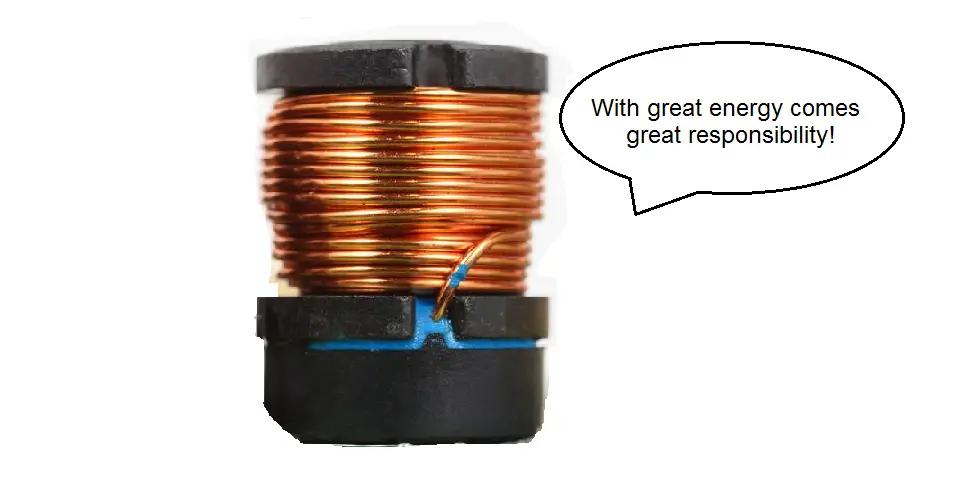An Inductor is an important component used in many circuits as it has unique abilities. While it has a number of applications, its main purpose of being used in circuits is oppose and change in current.
It does this using the energy that is built up within the inductor to slow down and oppose changing current levels.
But, how does an inductor store energy? An Inductor stores magnetic energy in the form of a magnetic field. It converts electrical energy into magnetic energy which is stored within its magnetic field. It is composed of a wire that is coiled around a core and when current flows through the wire, a magnetic field is generated.
This article shall take a deeper look at the theory of how energy is stored in an inductor in the form of a magnetic field.
Energy, Magnetic fields and Inductors
Before looking at how an inductor stores energy, we will need to take a couple steps back and learn a little bit about energy.
You might be aware of the phrase; “Energy cannot be created or destroyed, only changed from one form to another.”
This is the first law of Thermodynamics.
The universe has a constant amount of energy that just changes from one form to another.
Types of energy include;
- Mechanical
- Thermal
- Nuclear
- Chemical
- Electrical
- Magnetic
- Electromagnetic
The main type of energy that we shall be concerned about for this article is Magnetic energy which is found within a Magnetic Field.
How magnetic fields are produced
We have all witnessed the awesome powers of a magnet as it attracts metal objects without the need of physical touch.
But, what exactly gives magnets their awesome abilities?
This comes down to the fact that all matter is made of Atoms which have a nucleus that contains protons and neutrons.
Orbiting the nucleus on the outside are electrons (which are tiny moving charges).
As these electrons move around the nucleus they create a magnet field around each atom.
Each atom’s magnet field will have a certain orientation which is known as its Moment. If you were able to look at an object at a subatomic level you would see that every atom resembles a tiny magnet.
However, for an object to be magnetic, it needs to have a large magnetization which is created when all the moments (orientation of an atom) within an object are aligned.
The majority of objects (like a piece of wood) have their moments misaligned so the net magnetization is zero.
When the net magnetization of an object is large enough that it creates a substantial magnetic field around it and can be considered to be magnetic.
How magnetic fields are generated in a wire
We just saw that all atoms have a magnetic field.
But, there are other instances where a magnetic field can be generated.
A magnetic field is generated around a wire when a current flows through that wire. A circular magnetic field will surround it.
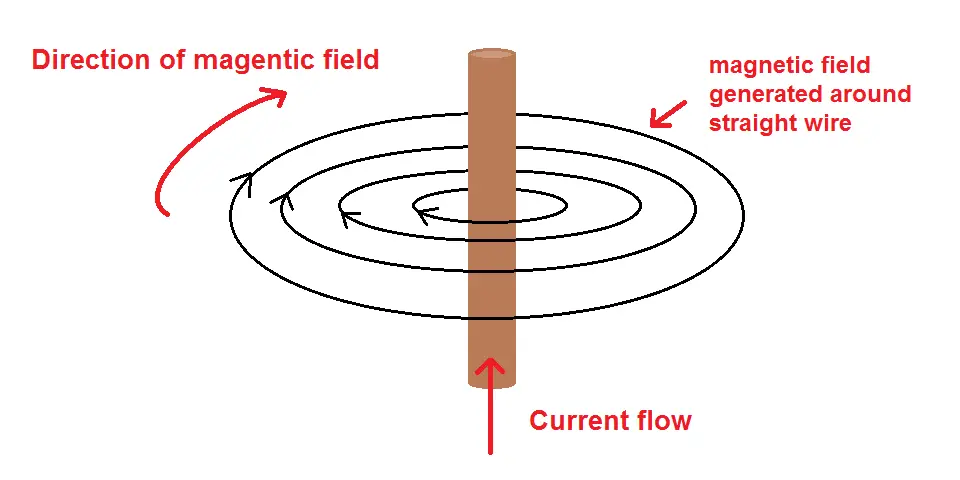
The strength of the magnetic field is directly proportional to the current. So, increasing the current will increase the magnitude of the magnetic field.
Also, the strength of the magnetic field is strongest closest to the wire. An inductor makes great use of this as we shall soon learn.
What is an inductor?
Now let’s take a brief look at an Inductor which will further help us understand how it stores energy.
An inductor is a two terminal passive component which has the ability to store energy in the form of a magnetic field when current flows through it.
The main purpose of an Inductor is to oppose any sudden changes in current.
They slow down current spikes and surges by storing this extra energy in their magnetic field and then slowly releasing it back into the circuit.
Its ability to resist this change can be shown by its Inductance which is the ratio of voltage and current change within the inductor.
Inductance is given in the unit of Henry (H).
Construction and working principle of an Inductor
If you were to look at a circuit schematic which had an inductor, you would see a symbol as seen below.
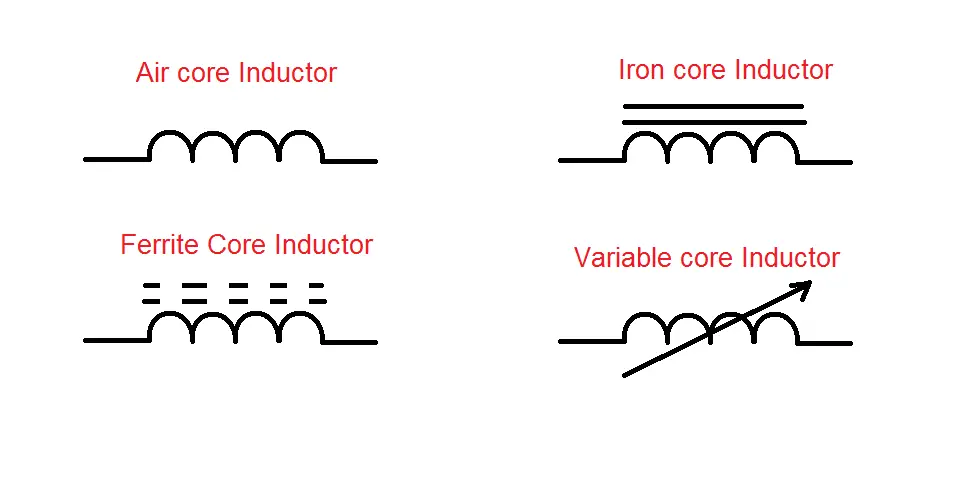
The construction of a basic Inductor involves a wire that is coiled around a core material.
This core material can vary depending on the needs of the application and can include either magnetic iron or ferrite core (amongst the most common).
An insulated copper wire is the choice of material for the wire wrapped around the core.
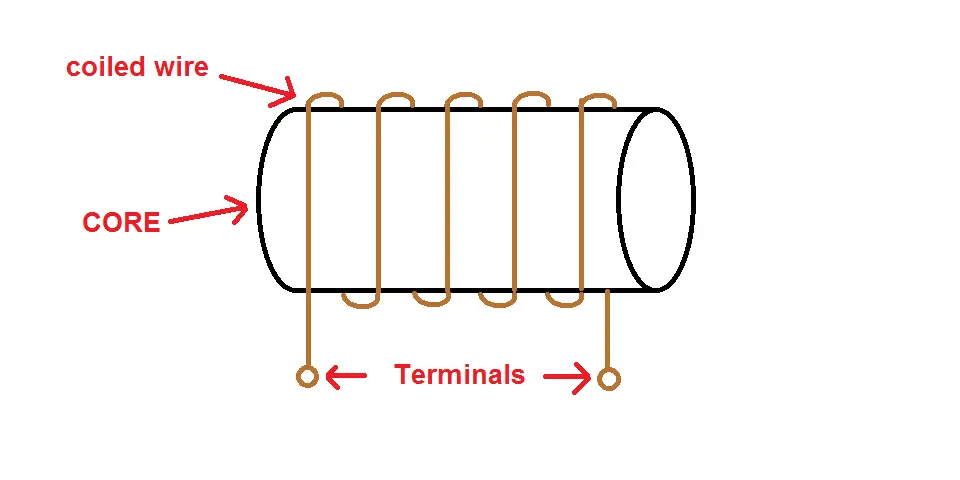
There are many variables that can alter the inductance of an inductor which include; number of turns (of the wire), spacing between turns, number of layers of turns, material of core, magnetic permeability of core material, size, and shape.
So how does an inductor work?
As current starts to pass through the inductor, a magnetic field is generated. The relationship between current and the strength of the magnetic field are directly proportional.
So, an increase in current will see an increase in the strength of the magnetic field.
How energy is stored in an inductor
Now that we have learnt about magnetic energy in magnetic fields, magnetic fields around a wire, and a little bit about inductors, we can take a look at how energy is stored in an inductor.
As mentioned earlier, energy is never created or destroyed, just changed from one form to another.
There are some components (such as a resistor), that just dissipate energy (in the form of heat) when current flows through them.
However, an inductor is a type of passive electronic component that is capable of converting kinetic energy (flow of electrons) and storing it in its magnetic field which is generated.
When current flows through a wire a magnetic field is generated around that wire. An energy is stored within that magnetic field in the form of magnetic energy.
An inductor utilises this concept. It consists of wire wrapped in a coil formation around a central core.
This means that when current flows through the inductor, a magnetic field is generated within the inductor.
So how does an inductor store energy?
An inductor stores magnetic energy in the form of a magnetic field. So it converts electrical energy (flow of electrons) into magnetic energy (stored in the magnetic field).
How much energy is the inductor capable of storing?
As you can imagine, the amount of energy stored in the magnetic field of a straight wire is going to be far less compared to that of a wire that has been coiled.
This is due to the fact the magnetic field (and therefore magnetic energy) is increased as a straight wire is coiled.
The strength of a magnetic field around a straight and coiled wire is known as magnetic field strength or H.
Below are the two formulas for the H in a straight and coiled wire.
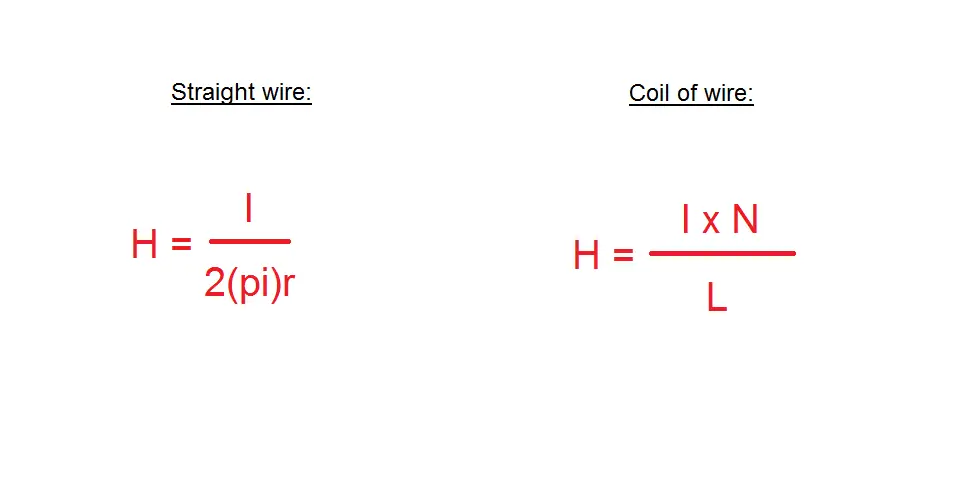
H – strength of magnetic field ampere/turn
N – number of turns of coil
I – current flowing through in Ampere (A)
L – length of coil (in metres)
By looking at the equation for a straight wire you can see that the only way to increase the magnetic strength is to increase the amount of current, or material of wire.
However, when it comes to a coil, you have many more options to increase magnetic strength which include;
- Number of turns contained within the coil
- How much current is flowing
- Type of core material used for the inductor
- Cross sectional area of wire
As you can imagine, inductors make use of this fact in how they are constructed. When you wrap a wire in a coil formation, you increase the strength of the magnetic and therefore increase the amount of energy it can store as well.
To know the exact strength of an inductor’s magnetic field (and how much energy it stores), you will need to use the formula above and know the values of the variables N, I and L.

